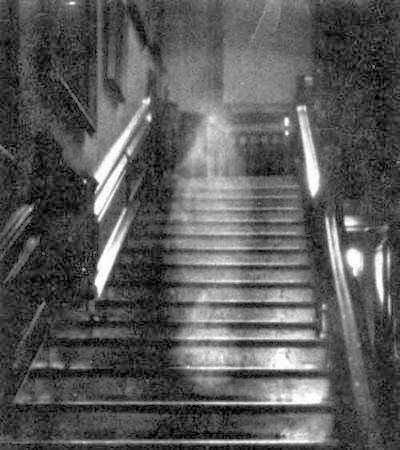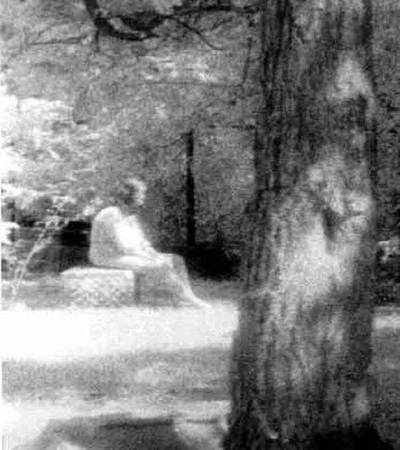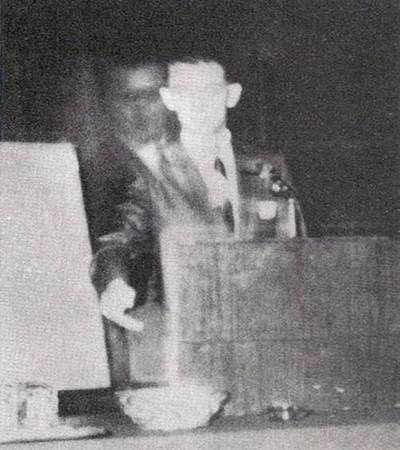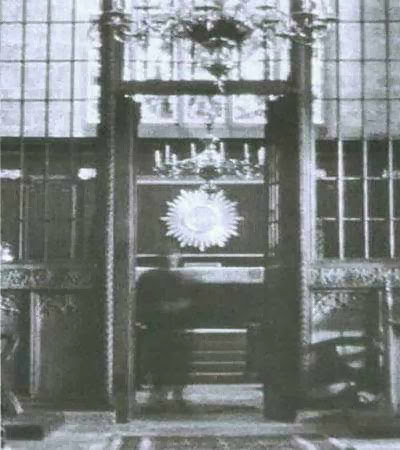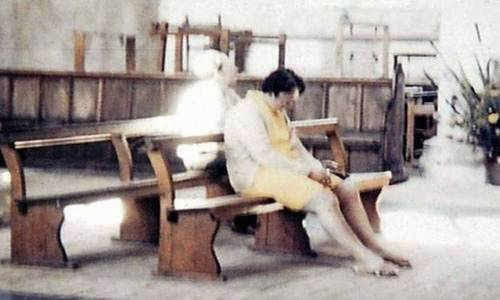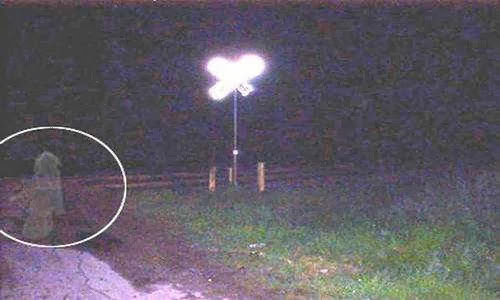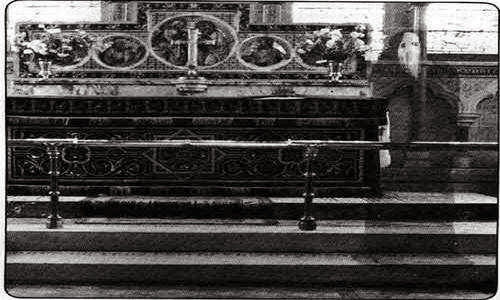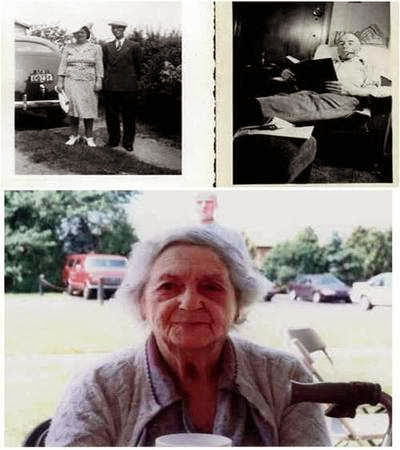Ujjain, religiously yours: Gems of Western Madhya Pradesh
Submitted by vishnu.kumar7 on Thu, 12/20/2012 - 22:38

An Evening at Ram GhatUjjain is very well connected to
Indore with frequent busses and also has train connectivity from other cities. Even before landing at
Ujjain, I was mentally prepared to travel in harmony with the crowd.
Ujjain was also hosting a large number of pilgrims those days due to
Karthik Mela in
Omkareshwar.
After an initial hitch, I lodged myself in a hotel close to the railway
station and freshened up. I went for long walk towards
Mahakaleshwar temple to get an idea about the town and to find a restaurant for my lunch.
Mahakaleshwar, which is also one of the 12
jyotirlinga, is the principal temple of the town and visited by thousands of pilgrims every day. Just after the lunch, I visited
Mahakeshwar temple
on first day in order to keep my second day little lighter. Luckily,
the temple was relatively less crowded during the second half of the day
that provided me leisure time around the temple and
jyotirlinga.
 Ram Ghat at Shipra River
Ram Ghat at Shipra River
How to reach Ujjain: Ujjain has got direct trains from Delhi, Mumbai and other cities of India however Indore is a much preferred transit for travelers from long distance. Few Airlines connect Indore with rest of the India. Frequent busses (3 hours) ply between Ujjain and Indore around the clock. Travelers from Maheshwar, Omkareshwar via Indore only. If Coming from Mandu side, you should get down at Dhar and then get a connecting bus to Ujjain.
 Diyas Floating in Shipra River
Diyas Floating in Shipra River
Accommodation/Food: Being a prime pilgrimage site of the country, Ujjain has got all kind of accommodation options with handful of Dharmshalas, ashrams on the Shore of Shipra River. Budget hotels are available in front of railway station and Mahakaleshwar road. Restaurants serving Poha, Kachori, Keshar Milk, Jalebi, Dal-Bhapla and Thalis are available near Mahakaleshwar temple and near railway station. Glass of Keshar milk is simply refreshing.
 Mahakaleshwar Temple from the back Ujjain
Mahakaleshwar Temple from the back Ujjain is one of the seven sacred cities of Hindus and draws its root back from the
mahabaratha times.
Ujjain is situated on the bank of river
shipra where millions of pilgrims take a holy dip during
Kumbh Mela which takes place here once in every 12 year. During festival time
Ujjain transforms into a town with strong devotional vibes however spiritual vibrations are always evident on the
Ghats of
Shipra River. While attending the evening prayers on Ram
Ghat
when flames float on the river surface, everyone experiences the pulses
of energy through temples perhaps because tropic of cancer passes
through here. Temples of
Ujjain are enough in numbers to drain out all the energy of even the most ardent pilgrim.
 Blackened Stone towers at Harisiddhi Temple
Blackened Stone towers at Harisiddhi Temple Short after visiting
Mahakaleshwar temple, I headed to
Harisiddhi Mandiri which is one of 52
shakti peeths situated all over India and lies at the walk-able distance from
Mahakaleshwar temple.
Two blackened stone towers at the entrance of the temple catch
everyone’s attention. These towers are used for lighting up the
diyas during evening of
Dussehra festival. According to the
Shivpuram when lord
shiva was taking the great
Sati from the
Yagya of
Daksya Prajapati, The Elbow of the
sati fell at this place. According to the
Skandhapuran, the Goddess was called
Harsidhi for killing two demons
Chanda and
Prachand. Buffaloes were used to be sacrificed here. According to the folk tradition
Harisiddhi is the worshipping Goddess of
Vikramdutya. There is a mention of the
Harisiddhi temple in the books of the
13th century but the present temple is of the
Maratha period. The Two lamp columns situated in the court yard of the temple exhibit the
Maratha style. On one of the Column gate of present tank, the year 1447 is inscribed.
 Temple on Ram Ghat Gopal Mandir,
Temple on Ram Ghat Gopal Mandir, which lies in the middle of the busy market, is another guide book attraction of
Ujjain.
Gopal Mandir: The Temple is a beautiful example of the
Maratha style of architecture. Besides the image of
Gopala-Krishna, the Image of
Shiva-Parvati,
Garudaand bay
Jabai are also installed in the inner sanctum of the temple. Bay
Jabai Shinde, the queen of Maharaja
Daulatrao Shinde, got this temple (dedicated to
Gopala-Krishna, the deity of her devotion) constructed in the
19th
century. The decorated silver door of the inner sanctum of this temple
is worthy of special attention. This door, it is said, was carried away
to
Ghazni from the famous
Somnath Temple. Ahmed Shah
Abdali carried it from there to Lahore.
Mahad ji Scindia recovered it and the same had been reinstalled in the temple
 Bank of Shipra River Gopal Mandir
Bank of Shipra River Gopal Mandir drenched my desires for visiting temples and I made my way to
Ramghat towards the bank of
Shipra River.
Ramghat is the bathing site for
Kumbh festival and blessed with countless temples on the shore of holy
Shipra River. During festival time,
Ramghat was packed with pilgrims taking a holy dip in the river and offering evening
arti. For getting a distant view of the temples, I crossed over the river and found a place on the other Shore of
Shipra River.
Every evening, Ambiance at the riverside is vibrant and serene at the
same time. Being a silent spectator of those activities at
Ramghat in
Ujjain
was indeed a fulfilling experience and quite soothing after a hectic
day of traversing between temples. As day approached to the dusk,
Priests started the evening
Arti along with thousands of worshippers. Quite similar to the Ganges
Arti at
Varanasi,
It’s a dazzling event which connects every life breathing at the
striking distance. Devotional vibes become stronger as chanting goes
faster and spiritual vibrations become evident with
diyas floating on the river surface. In between twinkling temples and humming devotees, Evening
Arti will definitely left you spell bound…. This is when I started enjoying the crowd... Looked like the flare of
diyas
on the river surface enlightened something within… In a short while as
moon dominated the sky, I receded back to the town along with the group
of pilgrims and
Sadhus… Being part of the evening
Arti
was the best part of the day which left me contended for the rest of
the evening and further…. Soon after I was back to my hotel room and had
a delicious
Thali
in Dinner… inquired about the cycles on rent… chit chatted with locals
over the tea… got a high level impression about the cycling route for
the next day before turning off the lights…
 Evening Prayer at the Ghat of Shipra River
Evening Prayer at the Ghat of Shipra River Next day was mostly planned as a cycling excursion around
Ujjain
covering more than 30 km and for that I needed a bicycle. Initially
none rented me a bicycle suspecting me a bicycle thieve but finally a
gentleman agreed to rent me one in the condition of leaving my Pan card
and driving license….Perfect… Life became much easier with that cycle..
Paddled it across the streets and had
poha as breakfast yet again…I could not recall the date since when I had not taken anything else but
Poha as breakfast… but believe me, I loved that breakfast for all those days.
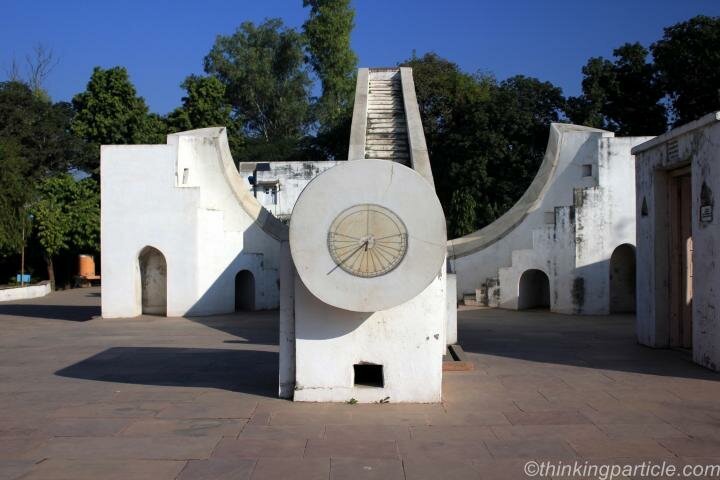 Sun Dial in Ujjain Observatory
Sun Dial in Ujjain Observatory Soon after taking the breakfast, I cycled to the
observatory (
entrée fee: 10
INR, dawn to dusk) which lies on the bank of River
Shipra and some 2-3 km from railway station. This observatory was constructed by
Savai Raja Jay Singh between 1725 and 1730 AD. Similar observatories were constructed by Raja Jay Singh at four other places-Delhi,
Jaipur,
Mathura and
Varanasi.
Samrat Yantra,
Nadivalaya Yantra,
Digansha Yantra,
Shanku Yantra and
Yamyottarabhitti yantra
are the main instruments constructed in this observatory. Motions and
orbits of the planets are studied through these instruments. On this
count, people call it
yantra-mahal also. This observatory was renovated by
Madhav Rao Scindia. The Then Maharaja of erstwhile
Gwalior
state in 1923 AD. Astronomical studies of the planetary motions are
still conducted in this observatory and an ephemeris (i.e journal
showing daily speed and position of planets) is published of every year.
In this way this is the only observatory among the observatories of Jay
Singh where Masonic instruments are even today utilized for
astronomical studies.
 Chintaman Ganesh Mandir Ujjain Chintaman Ganesh temple
Chintaman Ganesh Mandir Ujjain Chintaman Ganesh temple which is some 8 km from the observatory became my next stop.
Chintaman Ganesh lies on
Indore road (some 10 km from
Ujjain) and better to be clubbed with
Vedh Shala (Observatory). The present sanctum of
Chintamani Ganesh is very old.
Riddhi and
Siddhi, the two
Godesses are enshrined on both side of the idol of
Ganesh. Traditionally this is known as the seat of
Chintaharam Ganesh,
assurer of freedom from
wordly anxieties. People assemble here in large numbers to offer their prayers on Wednesdays in the month of
Chaitra. Artistic pillars in the assemble hall of the temple belong to the
parmar period. The temple was renovated by
Ahilyadevi Holkar with the addition of a water tank and the boundary-wall. It is said that while returning to
Ayodhya after the victory over
Ravana, Lord Rama rested here. To get rid of the thirst
Lakshman dug out the water with his arrow. This is reason the later tank is called
Banganga.
 Ghat behind the observatory
Ghat behind the observatory Shortly afterwards, I cycled back to the
Ujjain covering all the important sites based on this side of the town. Tropic of cancer has a warm affect on
Ujjain and
its surrounding. Days are always hot and sun rays are really strong. I
took the shower once again before having a light lunch.
Mangalnath Temple and
Kaliadeh Palace were the key attractions for the later half of the day along with visiting temples those falls en route.
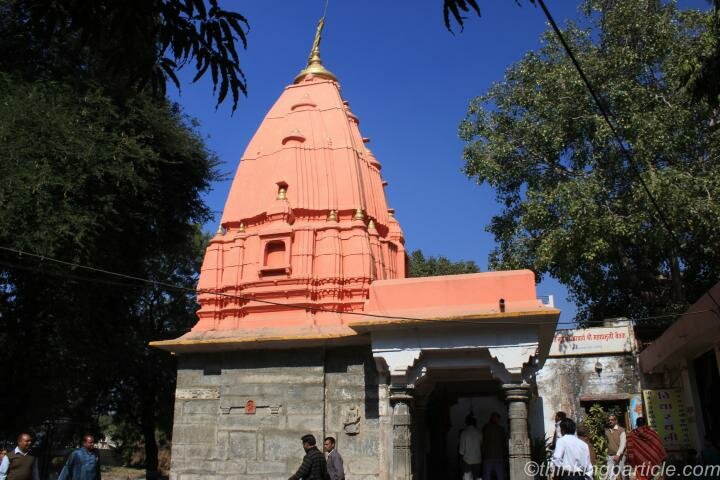 Temple in Sandipani Ashram Ujjain Sandipani Ashram
Temple in Sandipani Ashram Ujjain Sandipani Ashram was the first religious site on the way to
Mangalnath Temple. According to the
Puranic Tradition Krishna and his friend
Sudama received regular instruction in the ashram of
Kulaguru Sandipani. Besides
Mahabharata the
puranas,
sharimad-Bhagavata, Brahma,
Agni and
Bramavaivarta bear references to
Sandipani Ashram.
Archaeological evident of three thousand years’ old painted grey-wares has been recovered from the area. These bear a resemblance to the
similat remains recovered at
Hastinapur,
Indraprastha,
Mathura,
Achichchhatra and
Kaushambi. These evidences show that this region is the oldest in city.
Gomati-Kunda is the old source of water supply to the Ashram and the same has been referred to in the
puranas also. The image of standing
Nandi near the tank is worth seeing and it belongs to the
shung-period. The area nearby is known as
Ankapara. Popular tales describe that the place is used by Lord Krishna for washing his writing table. In the
16th century,
shri Vallabhacharya, great saint of
Vaishnava sect delivered his religious discourses in the vicinity of this ashram. The followers of the
Vallabha sect count this place as the
73rd seat of their
Acharya who is said to have made 84 for religious discourses throughout India.
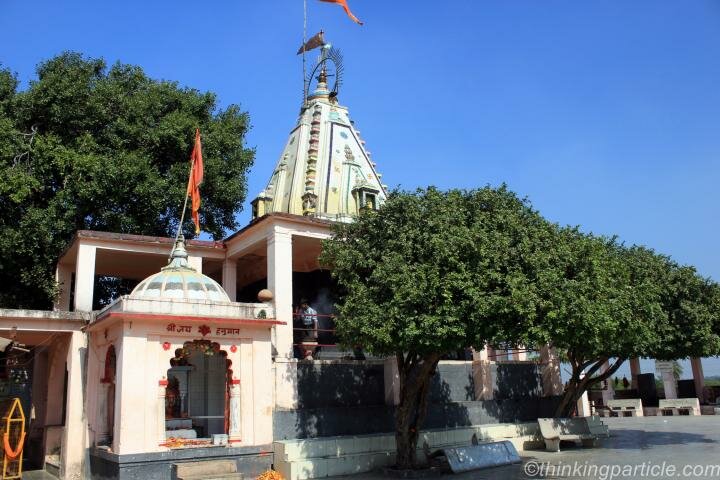 Mangalnath Temple
Mangalnath Temple After spending sometime in the ashram I headed further to
Mangalnath Temple which has got scenic settings on the confluence of
Shipra and
Khilchipur rivers.
Mangalnath temple draws the religious significance with a
banyan tree which is supposedly planted by
Parvati. Close to the temple, the serene bank of
Shipra is worth spending an afternoon. I crossed the bridge and reached the other side of the river where
Siddhavata,
Kaal Bhairava temples are situated. But I took the road heading to
Kaliadeh palace which is some 8-9 km from
Ujjain.
Kaliadeh palace is a bit off route from the typical pilgrim’s trail of
Ujjain. Now largely decayed in a ruin,
Kaliadeh was built in an unconventional way as a water palace in the middle of
Shipra River.
Kaliadeh palace was built by the Sultan of
Mandu
and is a fine example of Persian architecture. Closer to the water
palace lies Sun temple which is famous for a gorgeous sculpture of God
Sun.
 Pilgrims taking bathe in the tanks Kaliadeh palace
Pilgrims taking bathe in the tanks Kaliadeh palace Influence of
Karthik Mela was apparent at all the temples of
Ujjain and
Kaliadeh
palace was no exception however I loved the river shore and thin water
streams flowing through the villages. I sat down on the porch of the
temple and spent an afternoon watching the pilgrims performing religious
rituals at an unusual bathing bank of
Kaliadeh. Later I cycled back to the main road to visit some more temples before taking the leave from
Ujjain.
 Idol in Sun Temple near Kaliadeh palace
Idol in Sun Temple near Kaliadeh palace Situated on the bank of
Shipra River,
Siddhavata temple was my next stop.
Siddhavata at
Ujjain is as well known for its sanctity as
Akshayavata of
Prayag,
Vanshivata of
Vrindavan,
Panchavata of
Nashik and
Bodhivata of
Gaya. Post funeral rites are performed here at the
Siddhavata ghat of Holy
Shipra.
Skanda-Purana has referenced this place as
preta-Shila-Tirth. According to some,
Parvati performed her
penances here. This has also been a place of worship for the followers of
Natha Sect.
Shipra abounds with tortoises at
Siddavata. Old Coins of
Ujjain
bear the imprint of tortoises along with the river. This is also an
indicative of the fact that the tortoise must have flourished here even
in the ancient period. It is so said that this
banyan
tree was once sought to be cut and was converted with iron sheets to
make its existence invisible. But it's off shoots pierced through the
iron sheets and the tree regained its foliation.
 Kaal Bhairva Temple
Kaal Bhairva Temple Many other temples lie in the vicinity of
Siddavata but
Kaal Bhairava is the most famous for its unusual rituals.
Shaivite form of worship has also assigned importance to the adoration of eight
bhairavas.
Kaal- Bhairava is the foremost among them.
Skandpurana has made a mention of the temple of
Kaal Bhairava in its
avanti Khanda. According to some antique tradition, the followers of the
Kapalika and
aghora sects used to worship
shiva or
bhairava.
Ujjain was
also connected with the pattern of worship developed by these sects.
People offer even liquor, as a part of their worship to
Kaalbhairava. It is said that a certain king named
Bhadrasen got this temple constructed. This must have been a great temple during
parmar period.
Parmar period images of Shiva,
Parvati, Vishnu and
Ganesh
have been recovered from this place. The temple has usually been
rebuilt with the remains of the old temple. Beautiful paintings of
Malwa-style once decorated the temple walls. The temple to the right of the courtyard is dedicated to
Vitthala and to the left is
Adharmashala.
 Ram Janardan Temple Ram-Janardan temple
Ram Janardan Temple Ram-Janardan temple, which is also located on the bank of
Shipra River, was my last resort of that hectic day. Idols of Ram,
Laksham and
Sita in the Ram temple and that of
Janardan-Vishnu in the
Janardan temple belong to the
17th
century. Both the temples present at attractive look from the point of
view of their structural art. These temples were constructed by
Mirza Raja
Jaisingh in the
17th century. The boundary wall and the tank were added later in
Maratha period in the
18th century. Beautiful examples of
Maratha
paintings are seen on the walls of both the temple. Besides the
attractive scenes from the lives of Ram and Krishna, The paintings of
Bodalya bua Maharaj and
sant Tukoba etc are quite impressive. Certain old images can be seen installed in both the temples as well as near the tank opposite
Janardan temple which are very important from the point of view of sculpture skill also. The image of
Govarshandhari Krishna near the tank belongs to
11th century. The image of
Sheshashayi Vishnu installed in between the assembly hall and the interior of Ram-Temple belongs to the
10th century and the image of Brahma, Vishnu and Mahesh belong to the
12th century A.D.
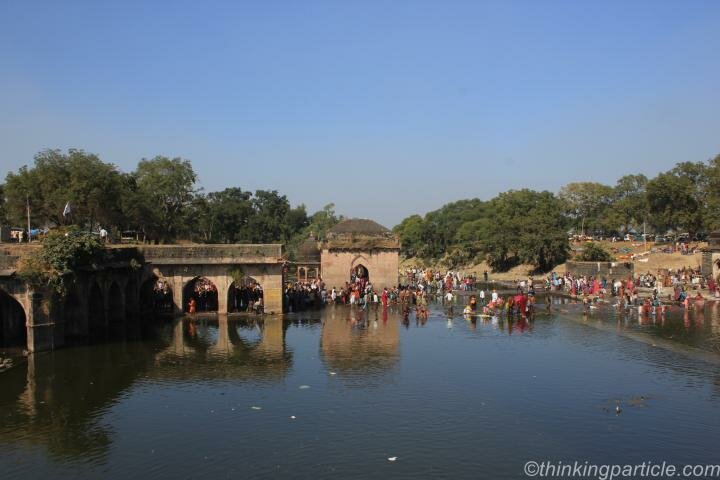 Kaliadeh Water Palace
Kaliadeh Water Palace
Finally after cycling more than 30 km in a day, I returned it back to
the owner. Cycling was indeed a fulfilling experience and a cheaper mode
of transportation between the temples. Very few cities of the country
are religiously (in terms of temples) as rich as
Ujjain. .. At the end of every long travel, I visit a saloon to regain my original appearance and it was
Ujjain
this time… Shortly afterwards, I was back to the railway station
waiting for the train… Like always, journey never ended….It left
something deep inside…something I am still trying to comprehend….
Courtesy: Archaeology, Archives and Museum, Madhya Pradesh, Bhopal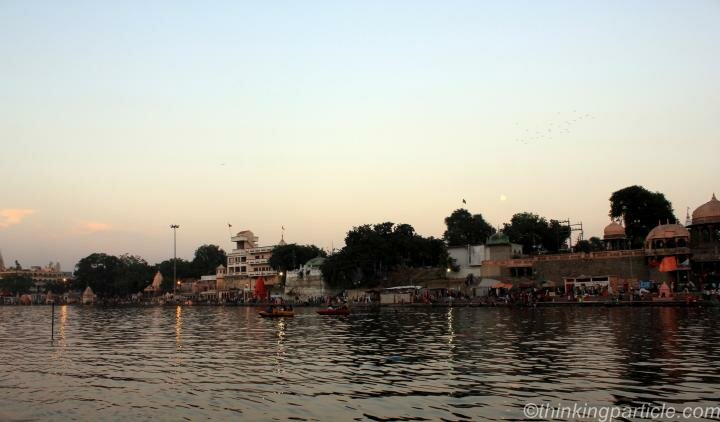 Birds, moon and the River
vishnu.kumar7's blog
Birds, moon and the River
vishnu.kumar7's blog








